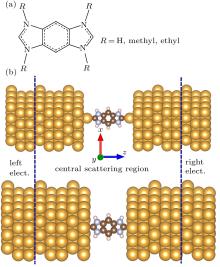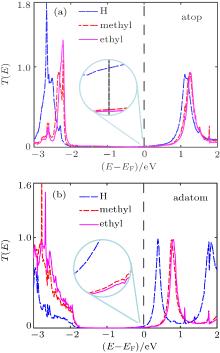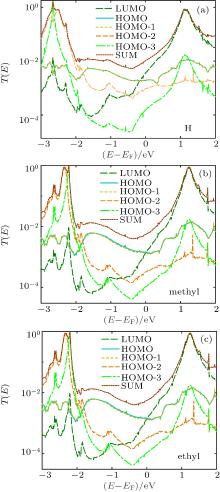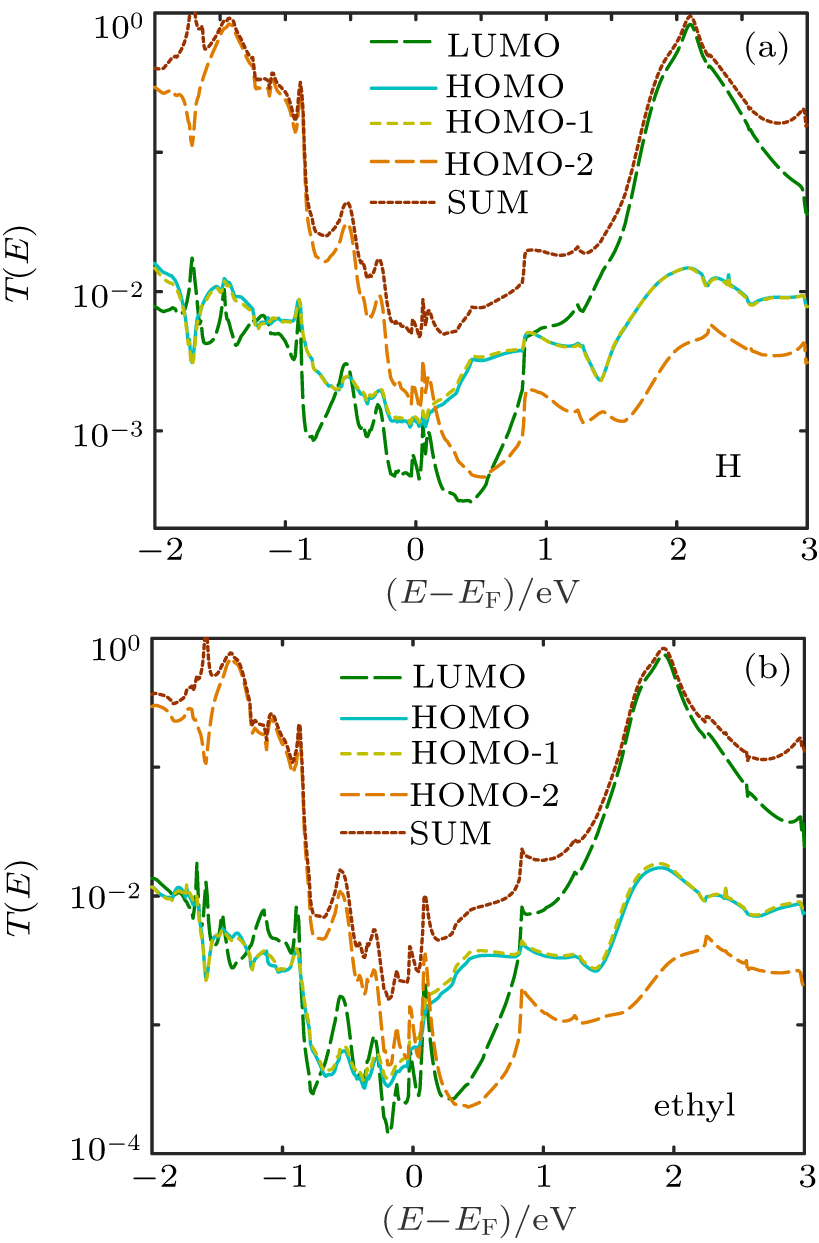| [1] |
|
| [2] |
Jia C, Migliore A, Xin N, Huang S, Wang J, Yang Q, Wang S, Chen H, Wang D, Feng B, Liu Z, Zhang G, Qu D, Tian H, Ratner M A, Xu H, Nitzan A, Guo X 2016 Science 352 1443 DOI: 10.1126/science.aaf6298 |
| [3] |
|
| [4] |
|
| [5] |
|
| [6] |
Sun F, Liu R, Suo Y Q, Niu L L, Fu H Y, Ji W F, Li Z L 2019 Acta Phys. Sin. 68 178502 in Chinese DOI: 10.7498/aps.68.20190693 |
| [7] |
|
| [8] |
|
| [9] |
Li Y Q, Kan H J, Miao Y Y, Lei Y, Qiu S, Zhang G P, Ren J F, Wang C K, Hu G C 2020 Chin. Phys. B 29 017303 DOI: 10.1088/1674-1056/ab5d02 |
| [10] |
|
| [11] |
Lopes C S, Merces L, de Oliverira R F, de Camargo D H S, Bufon C C B 2020 Nanoscale 12 10001 DOI: 10.1039/C9NR10601D |
| [12] |
Capozzi B, Xia J, Adak O, Dell E, Liu J Z, Taylor J C, Neaton J B, Campos L M, Venkataraman L 2015 Nat. Nanotech. 10 22 DOI: 10.1038/nnano.2014.279 |
| [13] |
Song H, Kim Y, Jang Y H, Jeong H, Reed M A, Lee T 2009 Nature 462 1039 DOI: 10.1038/nature08639 |
| [14] |
Xiang D, Jeong H, Kim D, Lee T, Cheng Y, Wang Q, Mayer D 2013 Nano Lett. 13 2809 DOI: 10.1021/nl401067x |
| [15] |
Sun H, Liu X, Su Y, Deng B, Peng H, Decurtins S, Sanvito S, Liu S, Hou S, Liao J 2019 Nanoscale 11 13117 DOI: 10.1039/C9NR01551E |
| [16] |
Zhan X, Facchetti A, Barlow S, Marks T J, Ratner M A, Wasielewski M R, Marder S R 2011 Adv. Mater. 23 268 DOI: 10.1002/adma.v23.2 |
| [17] |
Dell E J, Capozzi B, Xia J, Venkataraman L, Campos L M 2015 Nat. Chem. 7 209 DOI: 10.1038/nchem.2160 |
| [18] |
Low J Z, Capozzi B, Cui J, Wei S, Venkataraman L, Campos L M 2017 Chem. Sci. 8 3254 DOI: 10.1039/C6SC05283E |
| [19] |
|
| [20] |
|
| [21] |
|
| [22] |
Sprick R S, Hoyos M, Morrison J J, Grace I M, Lambert C, Navarro O, Turner M L 2013 J. Mater. Chem. C 1 3327 DOI: 10.1039/c3tc30368c |
| [23] |
|
| [24] |
|
| [25] |
Thanneeru S, Ayers K M, Anuganti M, Zhang L, Kumar C V, Ung G, He J 2020 J. Mater. Chem. C 8 2280 DOI: 10.1039/C9TC04776J |
| [26] |
Yang G, Amro N A, Starkewolfe Z B, Liu G Y 2004 Langmuir 20 3995 DOI: 10.1021/la0499160 |
| [27] |
|
| [28] |
Vericat C, Vela M E, Benitez G, Carro P, Salvarezza R C 2010 Chem. Rev. 39 1805 DOI: 10.1021/nl401067x |
| [29] |
|
| [30] |
|
| [31] |
|
| [32] |
Lv A, Freitag M, Chepiga K M, Schäfer A H, Glorius F, Chi L 2018 Angew. Chem. Int. Ed. 57 4792 DOI: 10.1002/anie.201713415 |
| [33] |
|
| [34] |
Ernst J B, Muratsugu S, Wang F, Rakers L, Lecante P, Philippot K, Chaudret B, Glorius F 2018 Chem. Commun. 54 7070 DOI: 10.1039/C8CC02833H |
| [35] |
Dejesus J F, Trujillo M J, Camden J P, Jenkins D M 2018 J. Am. Chem. Soc. 140 1247 DOI: 10.1021/jacs.7b12779 |
| [36] |
Bakker A, Timmer A, Kolodzeiski E, Freitag M, Gao H Y, Mönig H, Amirjalayer S, Glorius F, Fuchs H 2018 J. Am. Chem. Soc. 140 11889 DOI: 10.1021/jacs.8b06180 |
| [37] |
Larrea C R, Baddeley C J, Narouz M R, Mosey N J, Horton J H, Crudden C M 2017 ChemPhysChem 18 3536 DOI: 10.1002/cphc.v18.24 |
| [38] |
Rodriguez-Castillo M, Lugo-Preciado G, Laurencin D, Tielens F, van der Lee A, Clement S, Guari Y, Lopez-de-Luzuriaga J M, Monge M, Remacle F, Richeter S 2016 Chem. Eur. J. 22 10446 DOI: 10.1002/chem.201601253 |
| [39] |
Kim H K, Kyla A S, Winget P, Li H, Wyss C M, Jordan A J, Larrain F A, Sadighi J P, Fuentes-Hernandez C, Kippelen B, Brédas J, Barlow S, Marder S R 2017 Chem. Mater. 29 3403 DOI: 10.1021/acs.chemmater.6b04213 |
| [40] |
|
| [41] |
Doud E A, Inkpen M S, Lovat G, Montes E, Paley D W, Steigerwald M L, Vázquez H, Venkataraman L, Roy X 2018 J. Am. Chem. Soc. 140 8944 DOI: 10.1021/jacs.8b05184 |
| [42] |
|
| [43] |
|
| [44] |
|
| [45] |
|
| [46] |
Soler J M, Artacho E, Gale J D, García A, Junquera J, Ordejón P, Sánchez-Portal D 2002 J. Phys.: Condens Matter 14 2745 DOI: 10.1088/0953-8984/14/11/302 |
| [47] |
|
| [48] |
|
| [49] |
Rocha A R, García-Suárez V M, Bailey S W, Lambert C J, Ferrer J, Sanvito S 2005 Nat. Mater. 4 335 DOI: 10.1038/nmat1349 |
| [50] |
|
| [51] |
|
| [52] |
|
| [53] |
|
| [54] |
|
| [55] |
|
| [56] |
Zeng Y, Zhang T, Narouz M R, Crudden C M, McBreen P H 2018 Chem. Commun. 54 12527 DOI: 10.1039/C8CC06894A |
 ), Chuan-Kui Wang(王传奎)1
), Chuan-Kui Wang(王传奎)1











